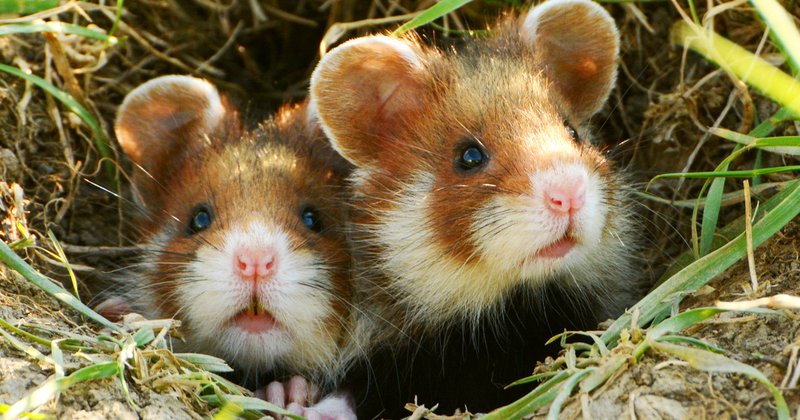
When you think of a small, furry companion that loves to run, chew, and burrow, what comes to mind? For many, it’s the hamster. These adorable little creatures have become popular pets, captivating hearts with their tiny noses and busy little paws. Whether you’re new to the world of pets or considering adopting a hamster, understanding what they are and what they need is essential for a happy, healthy life together.
Hamsters belong to the family of rodents and are known for their cheek pouches, which they use to store food and transport it back to their burrows. Imagine stuffing your cheeks with snacks—hamsters do it all the time! They have a playful spirit and can be quite entertaining, often racing on wheels or exploring their cages. Plus, they come in various breeds, each with unique colors and personalities.
However, hamsters aren’t just cute balls of fluff; they have specific needs that must be met to ensure they thrive in captivity. From habitat setup to diet choices, let’s take a deep dive into everything you need to know about these fascinating little creatures.
Types of Hamsters
Hamsters come in several breeds, each with its own characteristics. The most common types include:
- Syrian Hamster: Also known as the golden hamster, this breed is larger and often solitary. They’re very friendly with proper handling.
- Dwarf Hamsters: These include Campbell’s, winter whites, and Roborovski hamsters. They are smaller and more social, often enjoying the company of their own kind.
- Chinese Hamster: A bit more niche, these hamsters are known for their long tails and are more active than other breeds.
Choosing the right hamster depends on your lifestyle and how much time you can dedicate to caring for them. For instance, if you’re looking for a friendly companion, a Syrian hamster may be your best bet. But if you want a little bundle of energy that can interact with others, you might consider a dwarf hamster.
Hamster Habitat
Creating a proper habitat for your hamster is crucial. The cage should be spacious enough for them to run, explore, and hide. A minimum size of 24″x12″ is recommended for small hamsters, with larger cages for Syrian hamsters. Think of it as their home—just like we enjoy having our own space!
Here’s what you should include to make your hamster feel at home:
- : Use aspen shavings, paper-based bedding, or hemp bedding. Avoid cedar and pine, as they can be harmful.
- Hiding spots: Hamsters love to hide and burrow, so provide them with tunnels and hideouts.
- Exercise wheel: A must! Ensure it’s solid and safe for your hamster’s size.
Remember, hamsters are nocturnal, meaning they are active at night. You might hear them running on their wheels when you’re settling in for the evening. It’s all part of their charm!
Hamster Diet
Feeding your hamster requires understanding their dietary needs. A balanced diet is key to keeping your pet healthy and vibrant. The main components of a hamster’s diet include:
- Pellets: Have a high-quality hamster food mix as a base. Avoid seed mixes with a lot of sunflower seeds since they can be too fatty.
- Fresh Fruits and Vegetables: Offer small portions of fruits and veggies like apples, spinach, and carrots. Always wash them first!
- Treats: Occasionally, you can spoil your hamster with small treats, but keep these to a minimum.
Keep in mind that hamsters also enjoy chewing to keep their teeth healthy. Providing chew toys or safe wooden items can help satisfy this need while preventing dental issues.
Hamster Behavior and Socialization
Understanding hamster behavior is essential for creating a bond. Most hamsters are relatively solitary creatures, especially the Syrian breed. They prefer to live alone, while dwarf hamsters can be social and enjoy the company of their companions. When introducing hamsters to each other, it’s important to do so carefully, as territorial disputes can arise.
Handling your hamster regularly can help them become accustomed to your presence. Here’s how to do it right:
- Start slowly: Allow your hamster to sniff your hand before attempting to pick them up.
- Be gentle: Support their body fully, as they can be fragile.
- Time it right: Handle them when they are awake and active for the best interaction.
Playtime outside the cage can be exciting for them, but always supervise to prevent escapes or mishaps. Set up a secure area where they can explore—a playpen or a closed room works well.
Common Health Issues
Like any pet, hamsters can encounter health issues. Being observant can help you catch problems early. Some common health concerns include:
- Wet Tail: A serious condition often caused by stress, it results in diarrhea. Consult a vet immediately if you notice symptoms.
- Dental Problems: If you notice your hamster isn’t chewing properly or has swollen gums, they may need veterinary care.
- Respiratory Issues: Signs include sneezing or labored breathing. These can be serious and require professional attention.
Regular check-ups with a veterinarian familiar with small animals can help keep your hamster in tip-top shape. And always monitor their activity and eating habits, as changes can be indicators of underlying issues.
Hamster Lifespan and Care Tips
On average, a hamster lives for about 2 to 3 years, but with proper care, some can live up to 4 years. This lifespan means you’ll want to ensure their environment, diet, and social needs are well met during this time. Think of it as a commitment to a little fluffy friend that needs your attention and love.
Here are some tips to ensure a long, happy life for your hamster:
- Routine Maintenance: Clean their cage regularly and change bedding to prevent odors and health issues.
- Monitor Behavior: Pay attention to changes in activity or eating habits, as these can signal health problems.
- Enrichment: Rotate toys and change up their environment to keep their minds stimulated.
With love and care, your hamster can be a delightful companion who adds joy to your life.
FAQ
What do hamsters need in their cage?
Hamsters need a spacious cage that includes bedding for burrowing, hiding spots, an exercise wheel, and chew toys. It’s essential to provide enrichment to keep them entertained and active. A well-equipped cage contributes to their overall well-being and happiness.
Can hamsters be litter trained?
Yes, hamsters can be litter trained, although it may take some time and patience. Choose a corner of their cage and place a small litter box there. Use a safe, absorbent material. Reward them with treats when they use the box to reinforce the behavior!
Are hamsters suitable for children?
Hamsters can be great pets for children, provided there is adult supervision. They require gentle handling, and kids should be taught the best ways to interact with them. Make sure to monitor any interactions to ensure both the child and the hamster remain safe and comfortable.
How often should I handle my hamster?
It’s a good idea to handle your hamster a few times a week to help them become used to you. Start with brief sessions, gradually extending the time as they become more comfortable. Just be sure to respect their space and pick them up when they are awake and active.
What are signs of a healthy hamster?
A healthy hamster is active, has a good appetite, and exhibits bright eyes and a clean coat. They should groom themselves regularly and show curiosity about their environment. Any changes in these behaviors may indicate health issues that should be checked by a vet.
Do hamsters need a companion?
Hamsters are generally solitary animals, especially Syrian hamsters, which should be kept alone to avoid territorial disputes. Dwarf hamsters may enjoy living in pairs but should be introduced carefully to prevent fights. Always monitor their interactions closely.
How much exercise do hamsters need?
Hamsters need ample opportunities for exercise. A solid exercise wheel is a must-have, and they should have time outside their cage in a secure area for exploration. Aim for at least 30 minutes of activity daily to keep them healthy and happy.
What should I do if my hamster bites?
If your hamster bites, it’s usually a sign of fear or stress. Avoid sudden movements and give them space. Make sure you handle them gently and allow them to come to you. With patience, you can build trust, reducing the chances of biting.
How do I know if my hamster is sick?
Signs that your hamster may be sick include changes in eating habits, lethargy, excessive grooming, or noticeable changes in appearance like fur loss. If you observe any of these signs, it’s crucial to consult a veterinarian as soon as possible to identify and address the issue.
Can hamsters eat fruits and vegetables?
Yes, hamsters can eat small amounts of fruits and vegetables. It’s best to introduce new foods gradually and in moderation to avoid digestive issues. Always wash fruits and veggies thoroughly and avoid any toxic foods like citrus or onions.
What is the best bedding for hamsters?
The best bedding for hamsters includes aspen shavings or paper-based bedding, as they are safe and absorbent. Avoid cedar and pine shavings because they can harm a hamster’s respiratory health. Regularly changing the bedding helps maintain a clean and comfortable environment for them.

